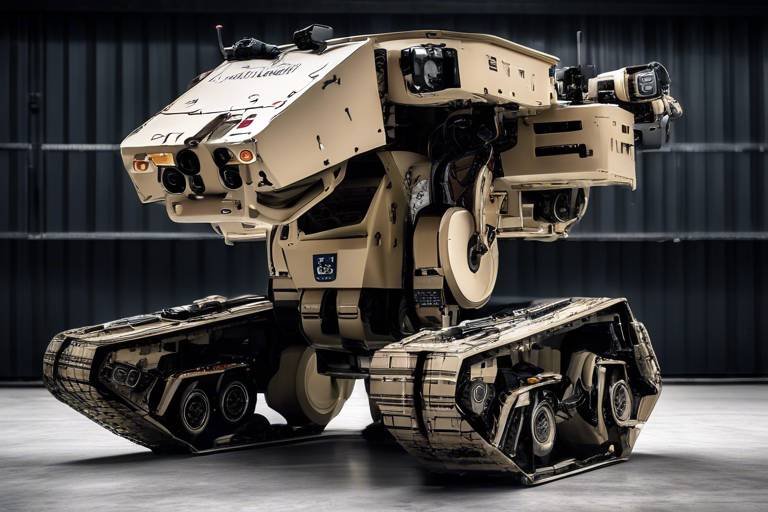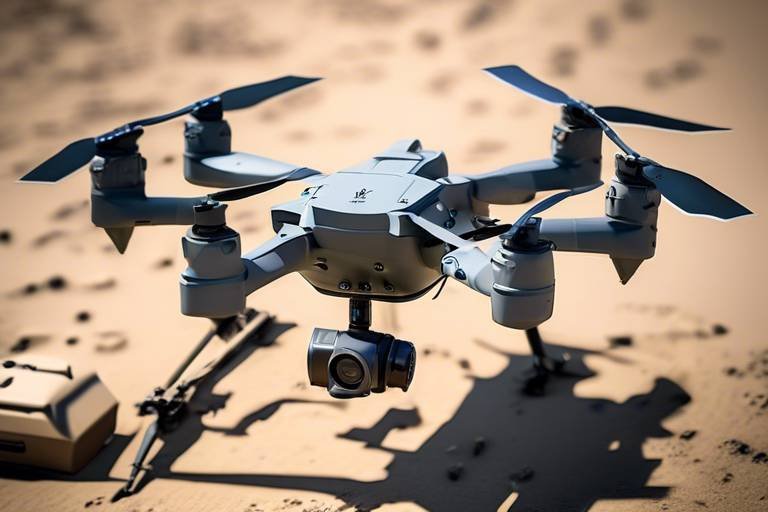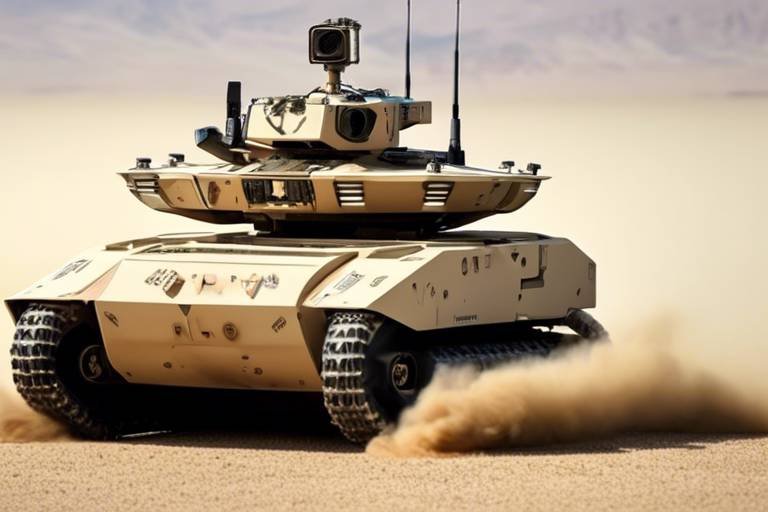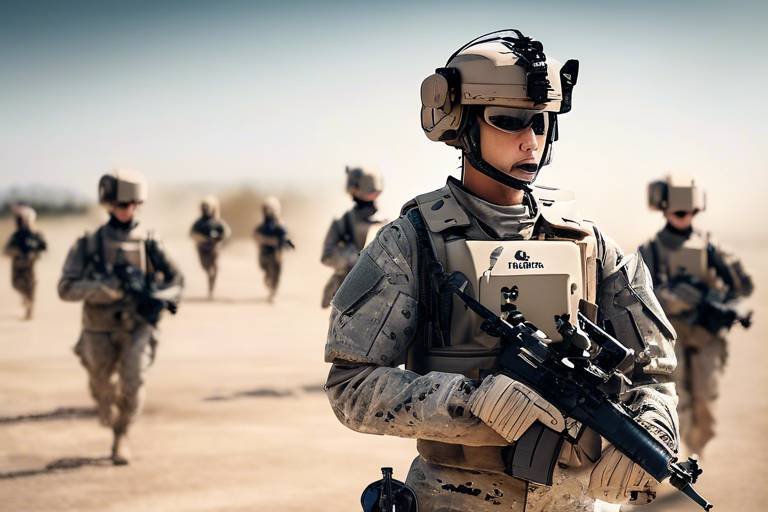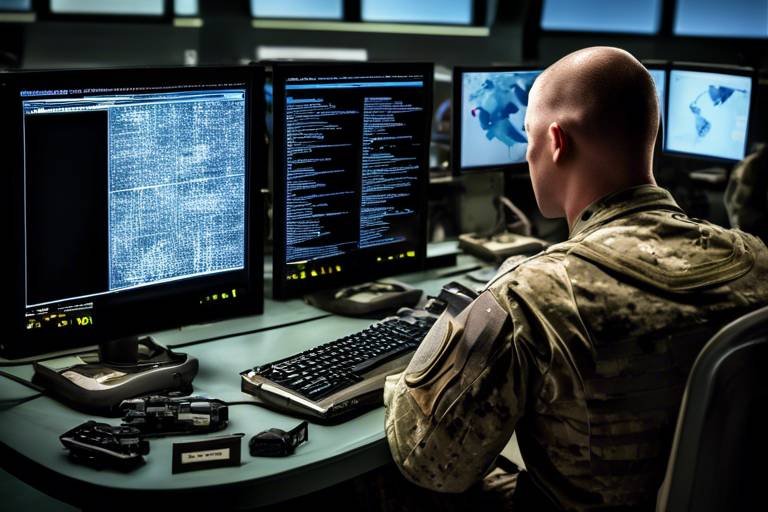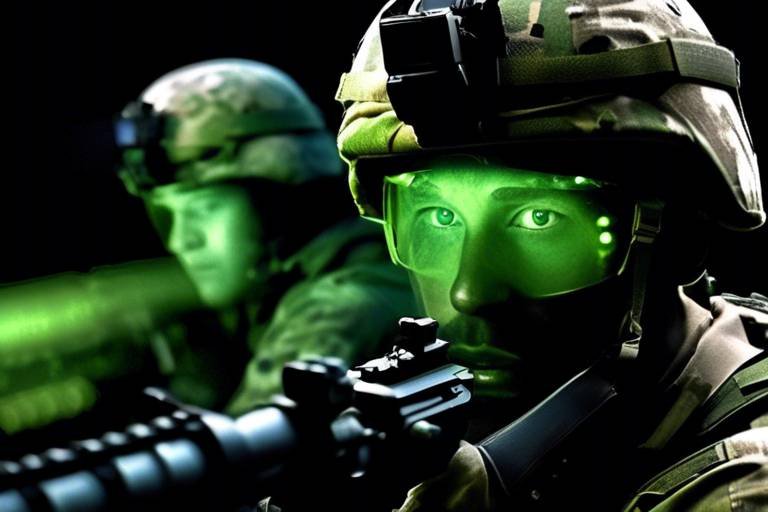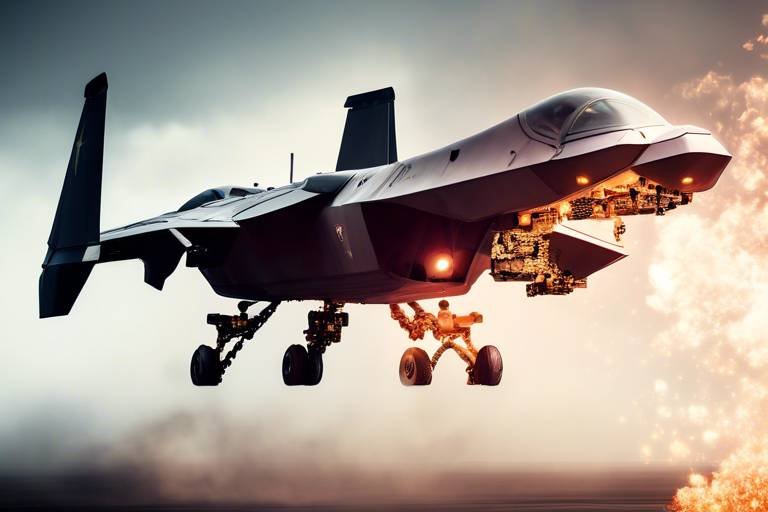How AI is Shaping the Future of Ground Combat Systems
In the ever-evolving landscape of warfare, artificial intelligence (AI) is not just a buzzword; it's a game-changer. The integration of AI into ground combat systems is revolutionizing how military operations are conducted, enhancing efficiency, and redefining strategies that have been in place for decades. Imagine a battlefield where decisions are made in real-time, data is analyzed instantaneously, and soldiers are supported by machines that can think and react faster than any human. This is not science fiction; it’s the reality we are stepping into.
AI is providing military forces with the tools needed to make data-driven decisions that can mean the difference between victory and defeat. By leveraging predictive analytics, commanders can anticipate enemy movements and adjust their strategies accordingly. This level of situational awareness is unprecedented, allowing for a more proactive rather than reactive approach to combat. The information gathered from various sources, including satellites, drones, and ground sensors, can be processed rapidly to provide actionable insights. This means that military leaders can make informed decisions in the heat of battle, minimizing risks and maximizing effectiveness.
Moreover, the rise of autonomous vehicles is further transforming ground combat systems. Picture drones flying overhead, gathering intelligence while ground robots navigate treacherous terrains to deliver supplies or engage in combat. These machines are not just tools; they are becoming integral members of the military team. By removing soldiers from high-risk situations, the military can significantly reduce casualties. However, the deployment of such technology is not without its challenges. There are ethical concerns surrounding the use of autonomous systems, particularly when it comes to decision-making in combat scenarios.
As we delve deeper into the implications of AI in warfare, it’s essential to consider the benefits and challenges that accompany these advancements. On one hand, autonomous systems offer improved efficiency and the ability to perform missions that would be too dangerous for human soldiers. On the other hand, issues such as accountability, ethical implications, and the need for robust cybersecurity measures must be addressed. The military must navigate these waters carefully to ensure that the integration of AI enhances, rather than undermines, operational integrity.
In conclusion, the future of ground combat systems is being shaped by AI in profound ways. As we continue to explore this dynamic field, it is crucial to remain vigilant about the ethical considerations and operational challenges that arise. The military's ability to adapt and integrate these technologies will determine the effectiveness of its forces in the years to come.
- What are the main benefits of AI in ground combat systems?
AI enhances decision-making, improves situational awareness, and reduces risks to human soldiers by automating certain combat functions. - How do autonomous vehicles change warfare?
They provide increased mobility, can perform high-risk missions, and support human soldiers in various operational capacities. - What ethical concerns are associated with AI in military operations?
Concerns include accountability for decisions made by AI systems and the potential for misuse in combat scenarios. - How can the military ensure responsible use of AI?
By establishing international regulations and standards that promote ethical practices and accountability in AI deployment.
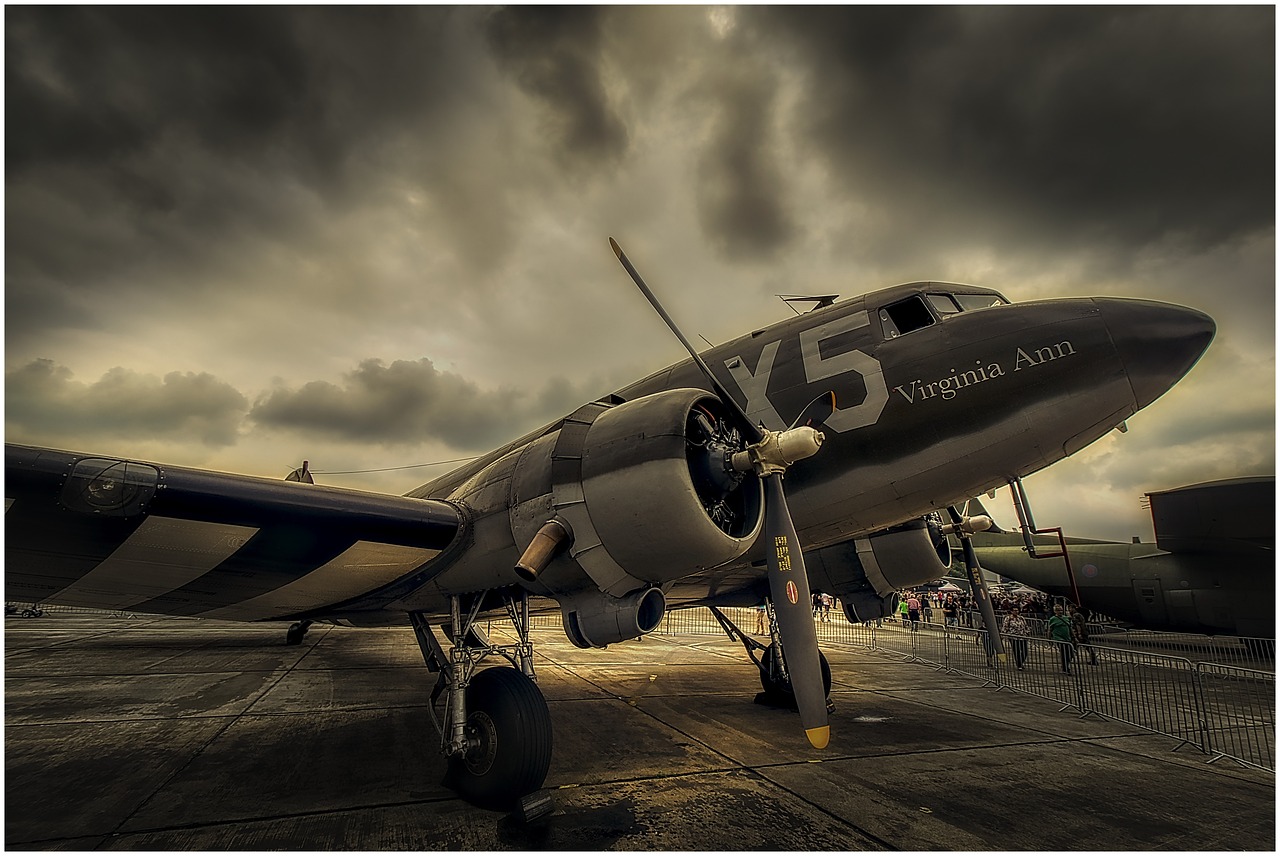
The Role of AI in Military Strategy
Artificial intelligence is revolutionizing military strategy in ways that were once the stuff of science fiction. Imagine a battlefield where decisions are made not solely by human intuition but by data-driven insights that can analyze vast amounts of information in seconds. This is not just a futuristic dream; it’s happening now. AI systems are enhancing situational awareness, allowing military leaders to understand the battlefield dynamics in real-time, making informed decisions that can save lives and resources.
One of the most significant contributions of AI in military strategy is its ability to perform predictive analytics. By analyzing historical data and current conditions, AI can forecast potential enemy movements, predict outcomes of engagements, and even suggest optimal strategies. This capability is akin to having a chess master who not only sees the current board but also predicts several moves ahead, allowing commanders to stay one step ahead of their adversaries.
Furthermore, AI enhances communication and coordination among various military units. Through advanced algorithms, AI can facilitate seamless information sharing, ensuring that all units are on the same page. This is crucial in combat scenarios where the fog of war can obscure clarity and lead to chaos. With AI, the military can maintain a unified operational tempo, significantly increasing the effectiveness of their strategies.
However, the integration of AI into military strategy is not without its challenges. There are concerns about over-reliance on technology, which could lead to vulnerabilities if systems fail or are compromised. Moreover, the ethical implications of using AI in warfare raise critical questions about accountability and decision-making processes. As we navigate this new terrain, it’s essential to strike a balance between leveraging AI's advantages and maintaining human oversight.
In summary, AI is reshaping military strategy through enhanced data analysis, predictive capabilities, and improved communication. As we move forward, understanding the implications of these changes will be crucial for military leaders. The future of warfare may very well depend on how effectively we can integrate AI into our strategic frameworks while addressing the ethical and operational challenges it presents.
- How does AI improve decision-making in military strategy? AI processes large datasets quickly, providing actionable insights that enhance situational awareness and strategic planning.
- What are the potential risks of using AI in military operations? Risks include over-reliance on technology, potential cybersecurity threats, and ethical dilemmas regarding accountability in decision-making.
- Can AI completely replace human decision-making in military strategy? While AI can assist in decision-making, human oversight remains essential to ensure ethical considerations and adapt to unpredictable situations.
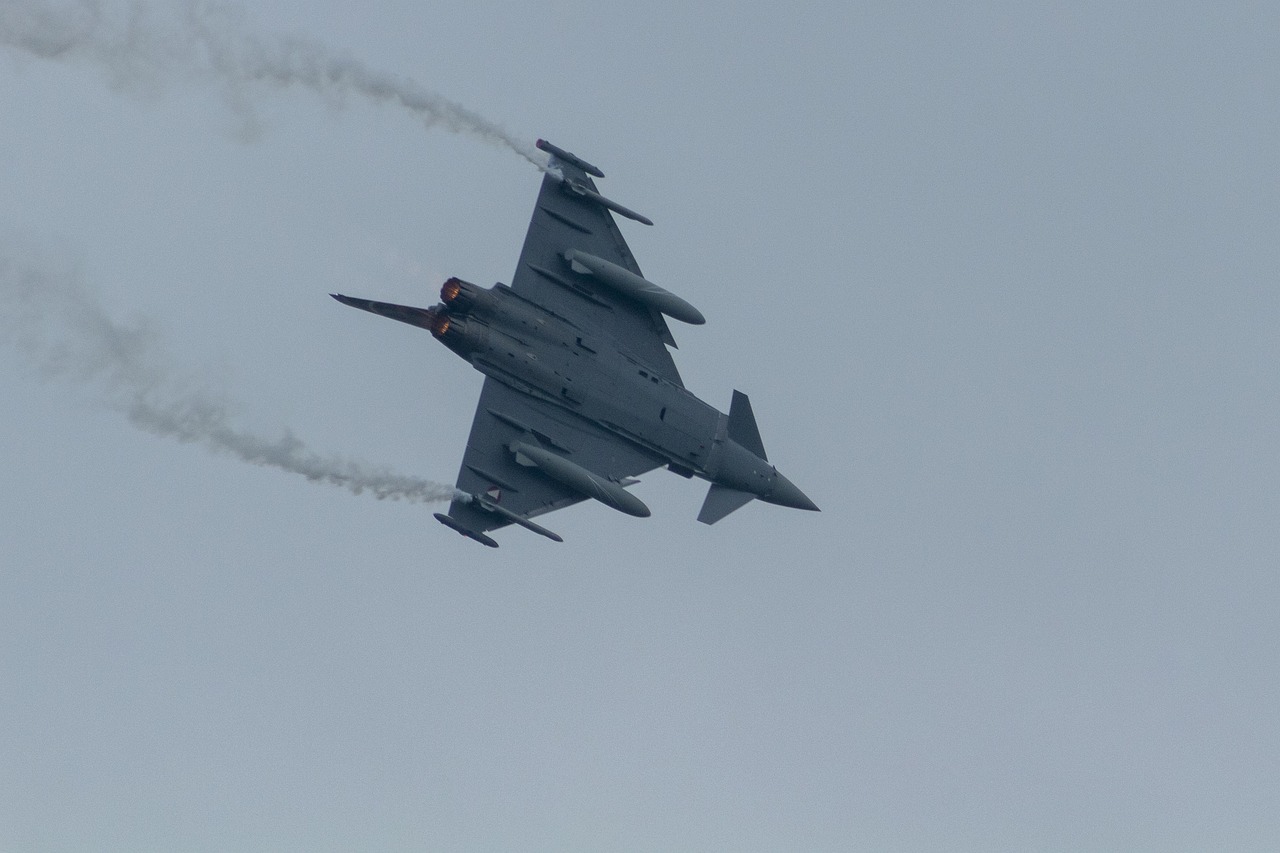
Autonomous Vehicles in Combat
The battlefield of the future is not just a place for human soldiers; it is increasingly becoming a domain for autonomous vehicles. These cutting-edge machines are redefining the rules of engagement and reshaping the dynamics of warfare. Imagine a scenario where unmanned drones soar through the skies, gathering intelligence and delivering supplies, while ground robots navigate treacherous terrains, all without putting a single soldier at risk. This is not science fiction; it is the reality of modern combat.
At the heart of this transformation is the integration of artificial intelligence into autonomous vehicles. These vehicles are designed to operate independently or in coordination with human teams, enabling military forces to enhance their operational capabilities. The potential applications of autonomous vehicles in combat are vast and varied, ranging from reconnaissance missions to direct combat operations. For instance, drones equipped with AI can analyze real-time data, track enemy movements, and make split-second decisions that could be the difference between victory and defeat.
There are several types of autonomous vehicles that are currently being developed and deployed in military operations. Each type serves a unique purpose:
- Drones: Unmanned aerial vehicles (UAVs) are extensively used for surveillance and reconnaissance. They can fly over hostile territories, gather intelligence, and provide real-time data to command centers.
- Ground Robots: These are designed to navigate on land, performing tasks such as bomb disposal, supply delivery, and even engaging in combat.
- Maritime Drones: Autonomous vehicles are also making waves in naval warfare, where they can patrol waters, detect submarines, and coordinate with larger ships.
The advantages of employing autonomous vehicles in combat are numerous and significant. First and foremost, they enhance operational efficiency. By deploying these machines, military forces can conduct operations with greater speed and precision. Furthermore, they reduce the risks to human soldiers, allowing military strategists to engage in high-stakes missions without endangering lives. This not only preserves the lives of military personnel but also allows for more daring tactical maneuvers that were previously considered too risky.
Another key benefit is the reduction in operational costs. Autonomous vehicles can operate for extended periods without the need for rest, food, or sleep, making them incredibly cost-effective in the long run. They can also be programmed to perform repetitive tasks, freeing up human soldiers to focus on more complex and strategic roles.
However, the deployment of autonomous vehicles is not without its challenges. Ethical concerns are at the forefront of this discussion. Questions arise regarding the accountability of machines in combat situations. If an autonomous drone makes a mistake that leads to civilian casualties, who is responsible? The military, the manufacturer, or the programmer? These are critical questions that need to be addressed as we move forward.
Moreover, technical limitations remain a hurdle. While AI has made significant strides, it is still not infallible. The technology must be robust enough to handle the unpredictable nature of combat scenarios. Additionally, cybersecurity measures are paramount. As these vehicles become increasingly connected, they also become vulnerable to hacking and other cyber threats. Ensuring the security of autonomous systems is essential to prevent them from being turned against their operators.
In conclusion, autonomous vehicles are set to play a pivotal role in the future of ground combat systems. They offer unparalleled advantages in terms of efficiency, safety, and operational cost-effectiveness. Yet, the challenges they present cannot be ignored. As we continue to innovate and integrate these technologies into our military strategies, it is crucial to navigate the ethical and technical landscapes carefully. The future of warfare is not just about machines; it is about how we choose to use them responsibly.
- What are autonomous vehicles? Autonomous vehicles are machines capable of operating without direct human control, using AI to navigate and perform tasks.
- How do autonomous vehicles enhance military operations? They improve efficiency, reduce risks to human soldiers, and can operate continuously without the need for rest.
- What are the ethical concerns surrounding autonomous vehicles in combat? Key concerns include accountability for decisions made by machines and the potential for unintended civilian casualties.
- What types of autonomous vehicles are used in combat? Drones, ground robots, and maritime drones are commonly used for various military applications.

Types of Autonomous Vehicles
In the rapidly evolving landscape of military technology, autonomous vehicles are at the forefront, significantly transforming ground combat operations. These vehicles come in various forms, each designed to fulfill specific roles that enhance operational capabilities and minimize risks to human soldiers. The two primary categories of autonomous vehicles that are making waves in the battlefield are drones and ground robots.
Drones have become synonymous with modern warfare, offering unparalleled advantages in reconnaissance and surveillance. Equipped with high-resolution cameras and advanced sensors, drones can gather real-time intelligence from the skies. They provide commanders with a bird's-eye view of the battlefield, allowing for informed decision-making and timely responses to threats. Furthermore, drones can be armed, enabling them to engage enemy targets without risking pilot lives. The versatility of drones has made them indispensable in various military operations, from intelligence gathering to air strikes.
On the other hand, ground robots are designed to operate on the battlefield's surface, performing tasks that range from logistics support to direct combat engagement. These robots can transport supplies, conduct reconnaissance missions, and even engage in firefights if necessary. Their ability to navigate challenging terrains and operate in hazardous environments makes them a valuable asset in ground combat scenarios. For instance, bomb disposal robots can safely neutralize explosive threats, reducing the risk to human life.
Moreover, the integration of artificial intelligence into these autonomous vehicles enhances their operational effectiveness. AI enables drones and ground robots to process vast amounts of data, recognize patterns, and make decisions in real-time, which is crucial in dynamic combat situations. As military forces continue to invest in these technologies, we can expect to see even more advanced autonomous systems that will redefine the nature of warfare.
In summary, the types of autonomous vehicles, including drones and ground robots, are revolutionizing military operations. They not only improve efficiency and safety but also provide strategic advantages that can turn the tide of battle. As technology advances, the potential applications for these vehicles will continue to expand, making them an integral part of future combat scenarios.
- What are the main types of autonomous vehicles used in military operations?
The primary types include drones for aerial reconnaissance and ground robots for logistics and combat support. - How do drones enhance military strategy?
Drones provide real-time intelligence, reduce risks to personnel, and can engage targets without putting pilots in danger. - What role do ground robots play in combat?
Ground robots assist in supply transport, reconnaissance, bomb disposal, and can engage in direct combat. - How does AI improve the functionality of autonomous vehicles?
AI enables these vehicles to process data quickly, recognize patterns, and make informed decisions in real-time.

Benefits of Autonomy
Autonomous systems are not just a futuristic concept; they are actively reshaping the landscape of modern warfare. One of the most significant is the ability to enhance operational efficiency. Imagine a battlefield where drones and ground robots can perform reconnaissance missions, supply deliveries, and even engage in combat without the direct involvement of human soldiers. This capability allows military forces to allocate their human resources more effectively, focusing on strategic planning and decision-making rather than getting bogged down in the minutiae of ground operations.
Moreover, autonomous systems significantly reduce the risks faced by human soldiers. In high-stakes environments, sending a human into a dangerous situation can be a matter of life and death. However, with the introduction of autonomous vehicles, such as unmanned aerial vehicles (UAVs) and ground robots, military operations can proceed with a much lower risk to personnel. These machines can enter hostile territories, gather intelligence, and even engage with enemy forces while keeping human lives out of harm's way.
Another compelling advantage is the cost-effectiveness of using autonomous systems. Over time, the operational costs associated with human soldiers—such as training, healthcare, and benefits—can be substantial. Autonomous systems, while requiring initial investment, can lead to long-term savings. They can operate continuously without the need for rest, food, or medical care, thereby maximizing productivity and minimizing the logistical challenges that come with deploying human troops.
Additionally, the precision and reliability of autonomous systems can lead to improved mission outcomes. These systems are equipped with advanced sensors and AI algorithms that enable them to analyze vast amounts of data in real-time. This capability allows for more accurate targeting and decision-making, reducing collateral damage and increasing the effectiveness of military operations. For example, a drone equipped with AI can identify and track enemy movements, providing commanders with critical insights that would be difficult to obtain through traditional means.
However, while the benefits of autonomy are substantial, it is essential to approach the implementation of these systems with caution. The integration of autonomous technologies must be carefully managed to ensure that they complement human capabilities rather than replace them entirely. The ultimate goal is to create a synergistic relationship between human soldiers and autonomous systems, enhancing combat effectiveness while maintaining ethical standards in warfare.
- What are the primary advantages of using autonomous systems in combat?
Autonomous systems enhance operational efficiency, reduce risks to human soldiers, lower operational costs, and improve mission outcomes through precision and reliability.
- How do autonomous vehicles reduce risks to human soldiers?
By taking on high-risk missions, autonomous vehicles can operate in dangerous environments without putting human lives at risk.
- What ethical considerations arise from the use of autonomous systems in warfare?
Ethical concerns include accountability for decisions made by AI, potential misuse of technology, and the impact on human soldiers’ roles in combat.
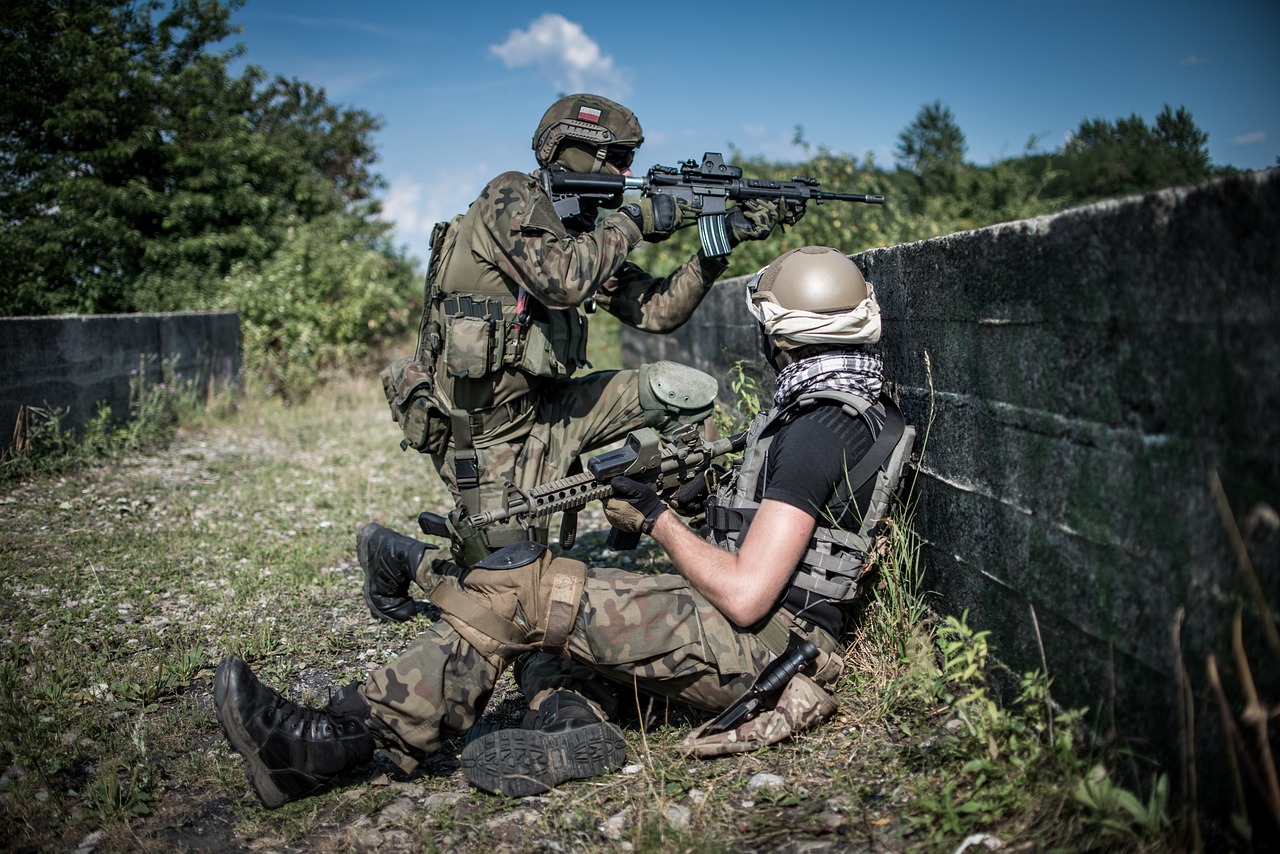
Challenges of Implementation
As we stand on the brink of a new era in military technology, the integration of autonomous vehicles and AI-driven systems into ground combat strategies presents a myriad of challenges that cannot be ignored. While the potential benefits of these technologies are immense, the road to their successful implementation is fraught with hurdles that military strategists and engineers must navigate carefully.
One of the foremost challenges is the ethical concerns surrounding the use of AI in combat. Questions arise about the morality of allowing machines to make life-and-death decisions without human intervention. For instance, who is responsible if an autonomous drone mistakenly targets civilians? The ambiguity in accountability raises significant issues that demand thorough examination and clear guidelines.
Additionally, there are technical limitations that hinder the deployment of these advanced systems. Despite significant advancements in AI, the technology is not infallible. Issues such as software bugs, system failures, and the inability to interpret complex battlefield scenarios can lead to catastrophic outcomes. Engineers must ensure that these systems are rigorously tested and capable of functioning under unpredictable conditions.
Moreover, the need for robust cybersecurity measures cannot be overstated. As military systems become increasingly reliant on interconnected networks, they become vulnerable to cyberattacks. A successful breach could compromise not only the integrity of autonomous vehicles but also the entire operational strategy of a military unit. Therefore, investing in cybersecurity is paramount to safeguarding sensitive data and maintaining operational effectiveness.
In addition to these technical challenges, there is also the human factor to consider. Soldiers will need to adapt to working alongside AI systems, which requires comprehensive training programs. These programs must not only teach soldiers how to operate and interact with AI technologies but also instill a sense of trust in these systems. After all, when lives are on the line, hesitation can be deadly.
Lastly, the financial implications of implementing AI and autonomous systems cannot be overlooked. Developing, testing, and deploying these technologies require substantial investment. Budget constraints may limit the extent to which a military can adopt these innovations, forcing a careful evaluation of priorities and potential trade-offs.
In summary, while the integration of AI and autonomous vehicles into ground combat systems holds great promise, overcoming the challenges of ethical concerns, technical limitations, cybersecurity, human adaptation, and financial constraints will be crucial for successful implementation. Only by addressing these issues can military forces fully harness the potential of AI to reshape the future of warfare.
- What are the main ethical concerns regarding AI in warfare?
The primary ethical concerns include accountability for decisions made by AI systems, the potential for unintended harm to civilians, and the moral implications of machines making life-and-death choices.
- How can military forces ensure the reliability of autonomous systems?
Rigorous testing and validation processes, along with continuous updates and monitoring, are essential to ensure the reliability of autonomous systems in various operational scenarios.
- What role does cybersecurity play in the implementation of AI in combat?
Cybersecurity is critical to protect military systems from hacking and data breaches, which could compromise operations and put lives at risk.
- How important is training for soldiers working with AI systems?
Training is vital to ensure that soldiers can effectively operate and trust AI technologies, ultimately enhancing battlefield effectiveness and safety.
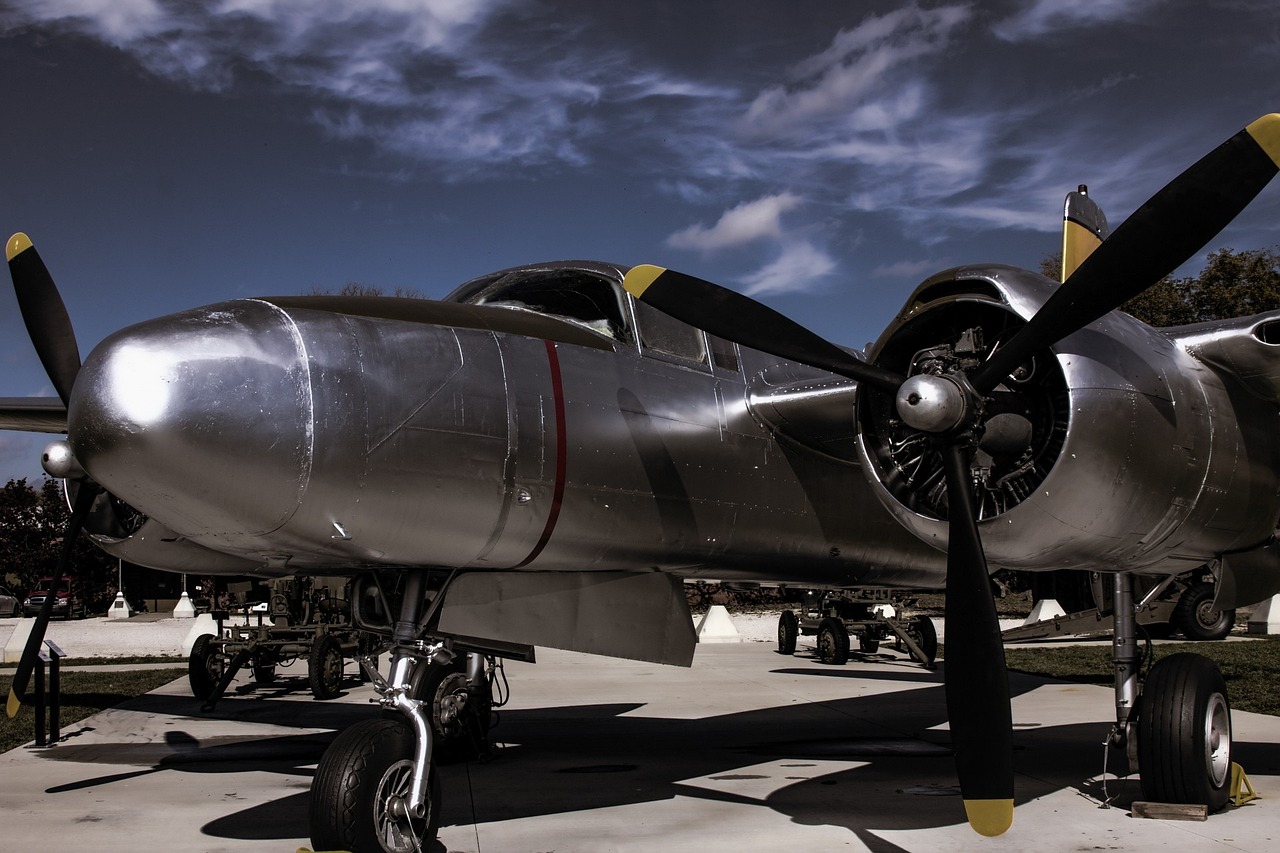
AI-Driven Intelligence Analysis
Artificial Intelligence (AI) is not just a buzzword in the tech world; it's a game-changer in military intelligence analysis. Imagine having the ability to sift through mountains of data in mere seconds, spotting trends and anomalies that would take human analysts days, if not weeks, to uncover. This is the power of AI-driven intelligence analysis, and it’s revolutionizing how military operations are planned and executed. With the stakes higher than ever in modern warfare, the military is turning to AI to enhance its decision-making processes.
At the heart of AI-driven intelligence analysis is the capability to process vast amounts of data from various sources, including satellite imagery, social media, and communications intercepts. This data flood can be overwhelming for human analysts, but AI algorithms can quickly identify relevant information and present it in a digestible format. For example, AI can analyze patterns in troop movements or logistical operations, offering insights that might go unnoticed by human eyes. This predictive capability not only enhances situational awareness but also allows military leaders to make informed decisions based on real-time data.
Furthermore, AI can assist in threat assessment by evaluating potential risks and providing actionable insights. By analyzing historical data and current trends, AI systems can forecast potential conflicts or identify emerging threats, allowing military strategists to preemptively address issues before they escalate. This proactive approach is crucial in a world where conflicts can arise suddenly and with little warning.
One of the most exciting aspects of AI-driven intelligence analysis is its ability to learn and adapt. Machine learning algorithms improve over time, becoming more accurate as they process more data. This means that the more the military uses these systems, the better they become at predicting outcomes and providing strategic recommendations. It's like having a seasoned analyst who never sleeps, constantly learning from every piece of information it encounters.
However, the integration of AI into military intelligence is not without its challenges. As we embrace these advanced technologies, we must also consider the ethical implications of their use. For example, how do we ensure that AI systems are making decisions based on accurate data and not biased information? Moreover, there’s the question of accountability—if an AI system makes a mistake, who is responsible for the consequences? These are critical issues that must be addressed as we move forward.
In summary, AI-driven intelligence analysis is reshaping the landscape of military operations. Its ability to process and analyze data at unprecedented speeds not only enhances operational efficiency but also provides a strategic advantage on the battlefield. As we continue to explore the potential of AI in this domain, it is imperative to balance innovation with ethical considerations, ensuring that these powerful tools are used responsibly and effectively.
- What is AI-driven intelligence analysis?
AI-driven intelligence analysis refers to the use of artificial intelligence technologies to process and analyze large volumes of data, providing insights that aid military decision-making. - How does AI improve military operations?
AI enhances military operations by offering predictive analytics, improving situational awareness, and enabling faster decision-making through data processing. - What are the ethical concerns surrounding AI in military use?
Ethical concerns include accountability for AI decisions, potential biases in data, and the implications of autonomous systems in combat scenarios. - Can AI systems learn and adapt over time?
Yes, AI systems can improve their performance through machine learning, becoming more accurate as they process more data.

Human-Machine Teaming
The collaboration between human soldiers and artificial intelligence (AI) systems is not just a futuristic concept; it’s happening right now and is fundamentally redefining combat effectiveness. Imagine a battlefield where human intuition meets machine precision, creating a synergy that enhances decision-making and operational efficiency. This is paving the way for a new era in military strategy, where the strengths of both humans and machines are leveraged to achieve superior outcomes. But how exactly does this partnership work, and what does it mean for the future of warfare?
At the heart of human-machine teaming is the idea that each party brings unique strengths to the table. Humans excel in strategic thinking, emotional intelligence, and the ability to make nuanced decisions in complex situations. On the other hand, AI systems can process vast amounts of data at lightning speed, recognize patterns, and execute tasks with precision that far exceeds human capability. When these strengths are combined, the result is a more effective and responsive military force.
One of the most significant advantages of human-machine teaming is the ability to enhance situational awareness. AI systems can analyze real-time data from various sources, such as satellite imagery, drone feeds, and sensor networks, to provide soldiers with a comprehensive understanding of the battlefield. This capability allows commanders to make informed decisions quickly, adapting strategies as situations evolve. For instance, during a combat operation, an AI system could identify potential threats and suggest optimal routes for troop movements, all while considering environmental factors and enemy positions.
However, successful human-machine teaming requires effective training programs that prepare soldiers to work alongside AI systems. This training is not merely about learning to operate new technology; it’s about fostering a mindset that embraces collaboration with machines. Soldiers must develop an understanding of how AI works, including its limitations and strengths. By doing so, they can maximize the benefits of this partnership, ensuring that they can rely on AI for support while also exercising their judgment when necessary.
Moreover, the integration of AI into military operations raises important questions about trust and reliance. How much should a soldier depend on AI for critical decisions? This is where the concept of trust in technology becomes crucial. Soldiers must feel confident that the AI systems they are working with are reliable and capable of supporting their missions. This trust is built through rigorous testing, validation of AI algorithms, and continuous feedback loops between human operators and AI systems.
As we look to the future, it’s clear that human-machine teaming will play a vital role in shaping modern warfare. The potential combat scenarios are vast, ranging from urban warfare to large-scale conflicts. In each scenario, the ability to seamlessly integrate human and machine capabilities will be a decisive factor in achieving mission success. Imagine a future where AI assists in planning operations, predicting enemy movements, and even providing real-time tactical advice during engagements. The possibilities are both exciting and daunting.
In conclusion, the partnership between human soldiers and AI systems represents a significant shift in military operations. As we continue to explore the potential of this collaboration, it’s essential to address the challenges and ethical considerations that arise. After all, the goal is to enhance human capabilities, not replace them. The future of warfare will undoubtedly be shaped by this dynamic interplay between humans and machines, creating a landscape that is more efficient, responsive, and ultimately, more effective in achieving strategic objectives.
- What is human-machine teaming?
Human-machine teaming refers to the collaboration between human soldiers and AI systems to enhance combat effectiveness and operational efficiency. - How does AI improve situational awareness?
AI analyzes real-time data from various sources to provide comprehensive insights into the battlefield, enabling quicker and more informed decision-making. - What are the training requirements for soldiers working with AI?
Soldiers need to undergo training that focuses on understanding AI capabilities, limitations, and how to effectively collaborate with these systems. - What are the ethical considerations of human-machine teaming?
Ethical considerations include trust, accountability, and the implications of relying on AI for critical military decisions.
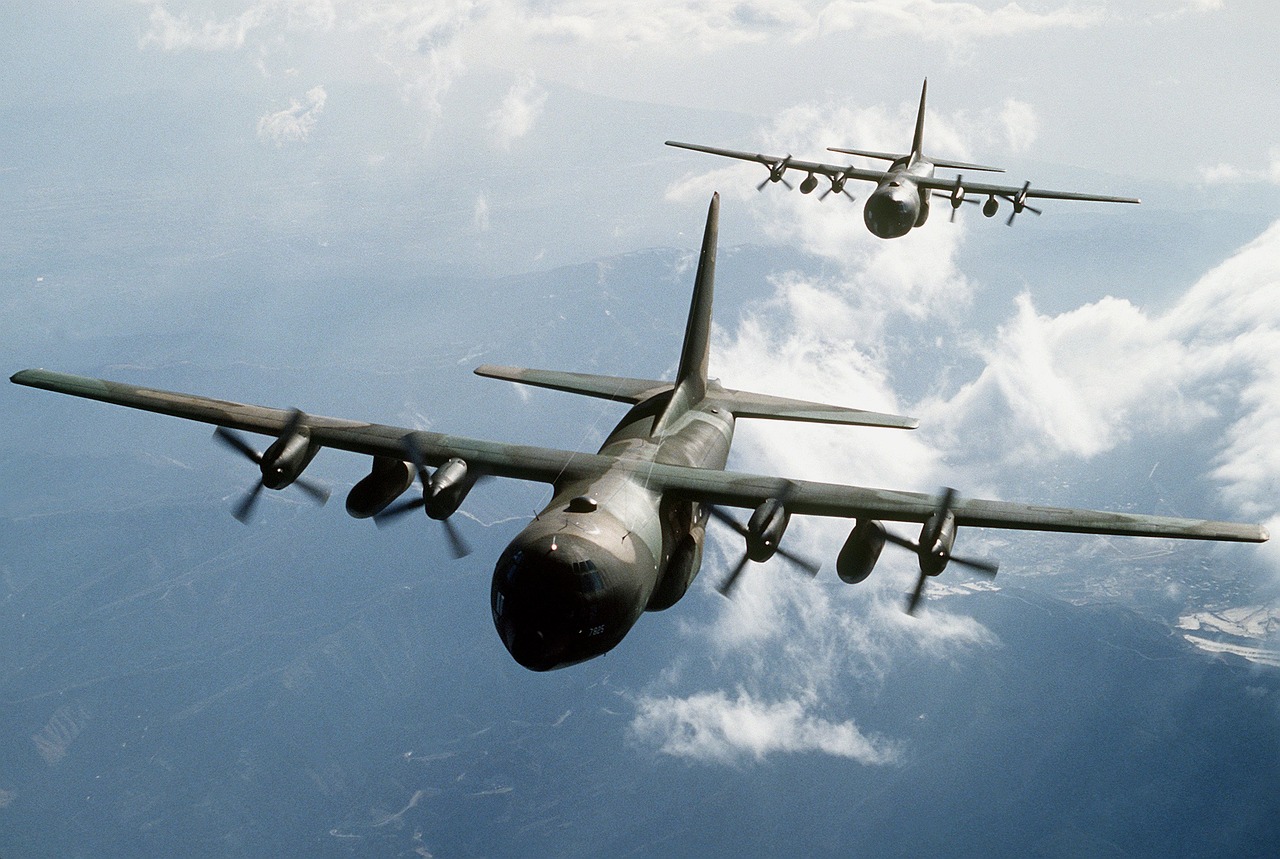
Training and Adaptation
As we step into an era where artificial intelligence (AI) plays a pivotal role in military operations, the importance of training and adaptation for soldiers cannot be overstated. Imagine a world where combat personnel are not only equipped with weapons but also with sophisticated AI tools that enhance their decision-making capabilities. This transformation requires a fundamental shift in how we train our military forces.
Effective training programs must be designed to ensure that soldiers can seamlessly integrate AI technologies into their operations. The challenge lies in bridging the gap between human intuition and machine precision. Just like learning to ride a bike, it’s all about finding that balance—understanding when to rely on your instincts and when to trust the data provided by AI systems.
To achieve this, training should encompass a variety of components:
- Hands-On Experience: Soldiers should engage in simulations that mimic real combat scenarios, allowing them to practice using AI tools in a controlled environment.
- Continuous Learning: The rapid pace of technological advancement means that training cannot be a one-time event. Ongoing education about new AI developments is crucial.
- Interdisciplinary Training: Collaborating with AI specialists can help soldiers understand the underlying algorithms, enabling better communication and teamwork.
Moreover, adapting to AI technologies involves not just technical skills but also a shift in mindset. Soldiers must embrace a culture of innovation where learning from failures is encouraged. This is akin to a sports team analyzing their game footage; they learn and adapt to improve their performance. In the military context, this could mean adjusting tactics based on AI insights to enhance mission outcomes.
One innovative approach to training is the use of virtual reality (VR) and augmented reality (AR)
Furthermore, the role of leadership in this training process is crucial. Leaders must foster an environment of trust and collaboration, where soldiers feel comfortable experimenting with AI tools and sharing their experiences. This not only enhances individual capabilities but also builds a cohesive unit that can effectively leverage AI in the field. In summary, the successful integration of AI into military operations hinges on comprehensive training programs that promote hands-on experience, continuous learning, and a supportive culture. As we adapt to these new technologies, we must remember that the human element remains irreplaceable. The future of combat will not just be about machines; it will be about the synergy between human soldiers and AI systems working together to achieve unparalleled effectiveness on the battlefield. As we look ahead into the horizon of warfare, the landscape is poised to undergo a seismic shift, thanks to the rapid advancements in artificial intelligence. Imagine a battlefield where decisions are made not just by human commanders but also by intelligent systems capable of analyzing real-time data and predicting enemy movements. This is not science fiction; it’s the emerging reality of future combat scenarios. The integration of AI will redefine how wars are fought, potentially leading to faster, more efficient, and less costly engagements. In these future combat scenarios, we can expect a blend of traditional warfare techniques with cutting-edge technological innovations. For instance, AI could be utilized to create dynamic battle plans that adapt on-the-fly based on the evolving situation. This means that as conditions change—whether due to enemy actions or environmental factors—the AI can instantly recalibrate strategies, providing commanders with a significant tactical advantage. The ability to predict and respond to threats in real-time could mean the difference between victory and defeat. Moreover, the use of AI-driven autonomous systems will likely become commonplace. These systems will not only perform reconnaissance missions but also engage in direct combat. Picture a scenario where swarms of drones, guided by AI, can coordinate attacks with precision, overwhelming enemy defenses while minimizing risk to human soldiers. This shift toward automation will also allow military forces to conduct operations in environments deemed too dangerous for human personnel, such as urban warfare or chemical hazard zones. However, the transition to AI-integrated combat systems is not without its challenges. We must consider the implications of relying on machines for critical decision-making. What happens when an AI miscalculates? Or worse, what if it is hacked? These questions highlight the importance of establishing robust protocols and safeguards around AI deployment in military contexts. The future of warfare will require a careful balance between leveraging AI's strengths and managing its potential risks. To illustrate how AI might shape future combat scenarios, let's examine a few potential developments: The future of combat is not just about machines; it’s about the synergy between human intuition and machine intelligence. As soldiers adapt to work alongside these advanced systems, their roles will evolve. They will become strategists, using their experience and judgment to guide AI systems in complex scenarios. This partnership can lead to enhanced operational effectiveness, where the strengths of both humans and machines are harnessed to achieve superior outcomes. In conclusion, while the future combat scenarios shaped by AI promise exciting advancements in military strategy and capabilities, they also necessitate thoughtful consideration of ethical and operational challenges. As we embrace these technologies, we must remain vigilant in addressing the potential risks and ensuring that the human element remains at the forefront of decision-making in warfare. As artificial intelligence (AI) becomes a cornerstone of modern military operations, the ethical implications of its use in warfare are increasingly coming to the forefront. The integration of AI into combat scenarios raises profound questions about accountability, decision-making, and the moral responsibilities of those who deploy these technologies. With machines making life-and-death decisions, how do we ensure that ethical standards are upheld? This concern is not merely academic; it is a pressing issue that demands immediate attention. One of the most significant ethical dilemmas revolves around accountability. When an AI system makes a decision that results in civilian casualties, who is responsible? Is it the programmer, the military commander, or the machine itself? The complexity of AI decision-making processes complicates this issue. Unlike traditional weapons, which operate under clear human commands, AI systems can learn and adapt, making it difficult to trace back the decision-making process. This ambiguity necessitates a thorough examination of legal frameworks and ethical guidelines to delineate responsibility and ensure that accountability is maintained. Moreover, the decision-making processes of AI systems must be scrutinized. AI can process vast amounts of data and make decisions faster than any human could. However, the algorithms that drive these systems are only as good as the data they are trained on. If the data is biased or flawed, the AI's decisions may lead to unintended consequences. This brings to light the necessity for transparency in AI algorithms and the importance of rigorous testing to minimize errors that could result in loss of life. In addition to accountability and decision-making, there is a pressing need for international regulations surrounding the use of AI in warfare. As nations race to develop advanced military technologies, the potential for misuse grows. Establishing clear guidelines and standards can help mitigate risks and promote ethical practices. For instance, an international treaty on the use of autonomous weapons could set boundaries on what is permissible, ensuring that all nations adhere to common ethical standards. The table below outlines potential areas for international regulation: As we navigate the complexities of AI warfare, it is crucial to engage in ongoing discussions about these ethical considerations. The military and policymakers must work together to create frameworks that guide the responsible use of AI technologies. By doing so, we can harness the potential of AI to enhance combat effectiveness while upholding our moral obligations to protect human life and dignity. The primary concerns include accountability for decisions made by AI, the potential for biased algorithms, and the need for international regulations to govern the use of autonomous weapons. Establishing clear legal frameworks and guidelines for responsibility, as well as ensuring transparency in AI decision-making processes, can help maintain accountability. International regulations can prevent misuse of AI technologies and promote ethical practices among nations, ensuring that all adhere to common standards.
As artificial intelligence (AI) becomes more embedded in military operations, the question of accountability in AI-driven decision-making is emerging as a critical concern. In combat situations, where the stakes are extraordinarily high and the consequences of decisions can be life-altering, determining who is responsible for the actions taken by autonomous systems is paramount. This dilemma is akin to navigating a minefield; one wrong step could lead to catastrophic outcomes, and understanding the terrain is essential for survival.
The integration of AI in warfare introduces a complex web of decision-making processes that can sometimes operate without direct human oversight. For instance, if an autonomous drone decides to engage a target based on its programmed algorithms, who bears the responsibility if that decision results in unintended casualties? Is it the programmer, the military commander who deployed the drone, or the AI itself? This ambiguity raises profound ethical questions that demand urgent attention.
To address these challenges, a framework for accountability is needed. This framework should clarify the roles and responsibilities of all parties involved in the decision-making process. Here are some key considerations for establishing accountability in AI-driven military operations:
Furthermore, the establishment of international standards and regulations will play a pivotal role in shaping the landscape of AI in warfare. Countries must collaborate to create norms that govern the use of AI technologies, ensuring that they are used responsibly and ethically. Without these standards, we run the risk of a chaotic arms race where nations deploy AI systems without regard for ethical considerations or accountability.
In summary, as we embrace the transformative potential of AI in military operations, we must also grapple with the profound implications of accountability and decision-making. The future of warfare may be changing, but our commitment to ethical practices and responsible governance should remain steadfast. After all, in the theater of war, the decisions we make today will shape the world we live in tomorrow.
As artificial intelligence (AI) continues to permeate military operations, the need for has become increasingly critical. The rapid advancement of AI technology in warfare raises numerous questions about its ethical implications, potential for misuse, and the overarching need for accountability. Countries around the world are recognizing that without a cohesive framework, the deployment of AI in combat scenarios could lead to unintended consequences, including civilian casualties and escalated conflicts. One of the primary challenges in establishing these regulations is the diverse perspectives on AI technology among nations. Some countries may prioritize rapid military advancements, while others might advocate for strict ethical guidelines to prevent misuse. This divergence can create a chaotic landscape where standards are inconsistent, potentially leading to a new arms race in AI capabilities. To address these concerns, various international organizations are working towards creating frameworks that can guide the responsible use of AI in military contexts. For instance, the United Nations has initiated discussions on the need for a global treaty that outlines the principles of AI use in warfare. Such a treaty could encompass: Additionally, nations must collaborate to develop joint standards that address the technical aspects of AI systems. This includes creating benchmarks for performance, security protocols, and guidelines for testing and evaluation. By aligning on these standards, countries can foster a safer and more predictable environment for the deployment of AI technologies in military operations. Furthermore, addressing ethical considerations is paramount. The international community must engage in dialogues that explore the moral implications of using AI in warfare. This includes discussions on how to prevent autonomous systems from making life-and-death decisions without human intervention. In essence, the goal should be to create a framework that not only enhances military effectiveness but also upholds humanitarian principles. In conclusion, while the integration of AI into military operations holds great potential, it also necessitates a robust set of international regulations and standards. By fostering cooperation among nations and prioritizing ethical considerations, the global community can ensure that AI is deployed responsibly and effectively in combat scenarios. AI is revolutionizing military strategy by enabling data-driven decision-making, enhancing situational awareness, and providing predictive analytics. This means that military leaders can make more informed decisions based on real-time data, ultimately leading to more effective combat operations. There are various types of autonomous vehicles, including drones, ground robots, and unmanned ground vehicles (UGVs). These vehicles assist in tasks like reconnaissance, supply delivery, and even direct combat operations, significantly changing the dynamics of warfare. Autonomous systems offer numerous advantages such as improved efficiency, reduced operational costs, and the ability to carry out high-risk missions without putting human lives in danger. This allows military forces to maintain a strategic edge while minimizing casualties. Despite their potential, the deployment of autonomous vehicles encounters challenges like ethical concerns, technical limitations, and the necessity for robust cybersecurity measures. Addressing these issues is crucial for the responsible use of AI in military contexts. AI enhances intelligence analysis by quickly processing vast amounts of data, identifying patterns, and providing actionable insights. This capability allows military planners to make quicker and more informed decisions, which can be critical in fast-paced combat situations. Human-machine teaming refers to the collaboration between human soldiers and AI systems. This partnership combines human intuition with machine precision, leading to improved combat effectiveness and better outcomes on the battlefield. As AI becomes more integrated into military operations, ethical considerations regarding its use, accountability, and decision-making processes must be addressed. Ensuring responsible deployment is vital to prevent misuse and protect human lives in combat scenarios. Determining accountability in AI-driven decisions is crucial, especially in combat situations where outcomes can significantly impact human lives. Establishing clear guidelines and protocols is necessary to ensure that responsible parties can be held accountable for AI actions. Yes, establishing international regulations and standards for AI in warfare is essential. These regulations help prevent misuse and promote ethical practices among nations, ensuring that AI technology is used responsibly and in accordance with international law.
Training is crucial as it ensures that soldiers can effectively integrate AI technologies into their operations, enhancing their decision-making and operational efficiency.
Virtual reality provides immersive training experiences that allow soldiers to practice using AI tools in simulated combat scenarios without real-world risks.
Soldiers need to develop technical skills to operate AI systems, as well as a mindset that embraces continuous learning and innovation.
Interdisciplinary training fosters better communication and teamwork between soldiers and AI specialists, leading to more effective use of technology in combat.
Future Combat Scenarios
Scenario
Description
AI-Assisted Command Centers
Command centers equipped with AI systems that analyze battlefield data in real-time, providing actionable insights to commanders.
Swarm Robotics
Utilization of drone swarms capable of executing coordinated attacks or surveillance missions autonomously.
Predictive Maintenance
AI systems that monitor equipment health and predict maintenance needs, ensuring operational readiness.
Cyber Warfare Integration
AI algorithms that can anticipate and counter cyber threats in real-time, protecting military networks.
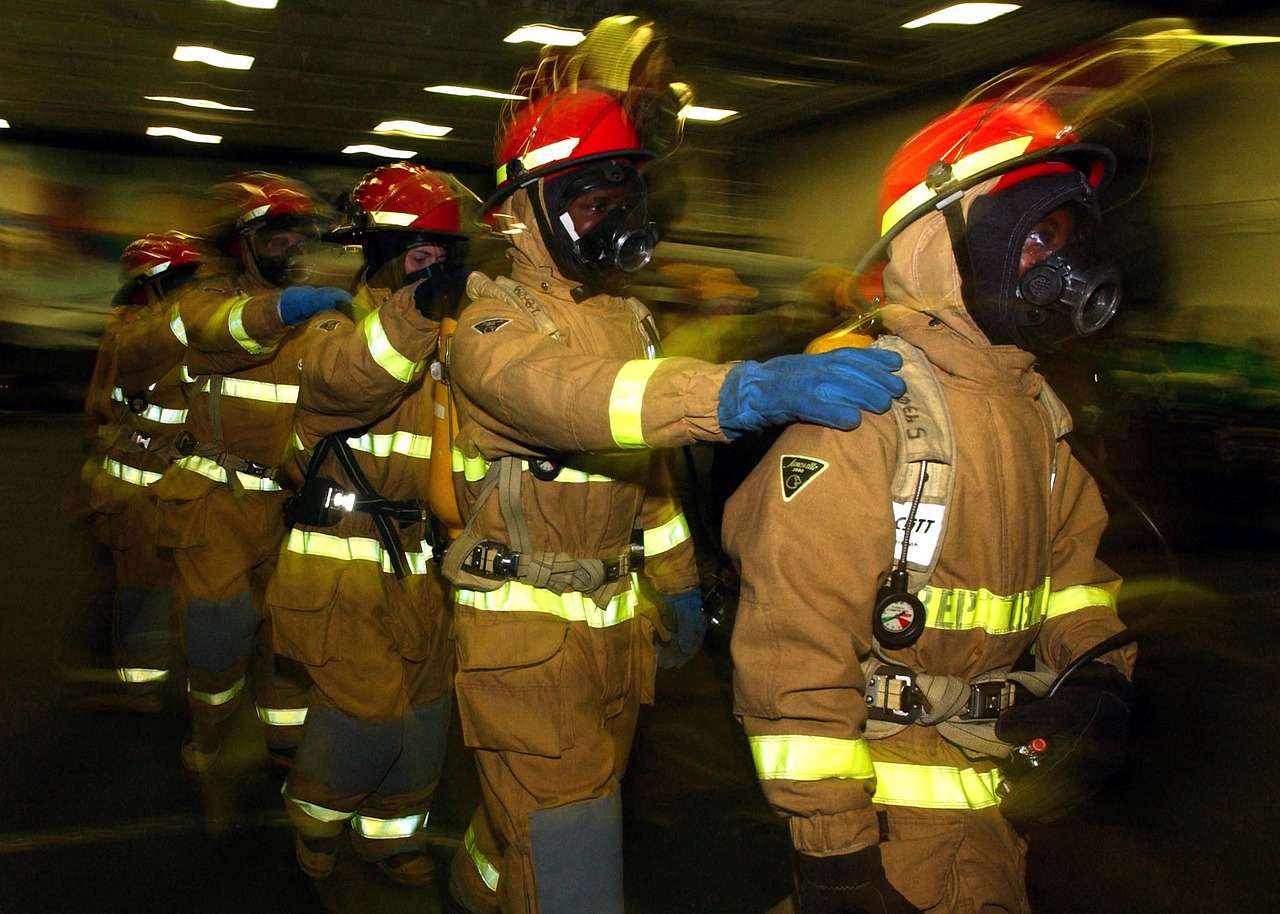
Ethical Considerations in AI Warfare
Area of Regulation
Description
Autonomous Weapons
Guidelines on the development and deployment of autonomous systems in combat.
Data Privacy
Regulations to protect civilian data used in military AI systems.
Accountability
Establishing clear lines of responsibility for AI-driven actions.
Transparency
Requirements for transparency in AI decision-making processes.
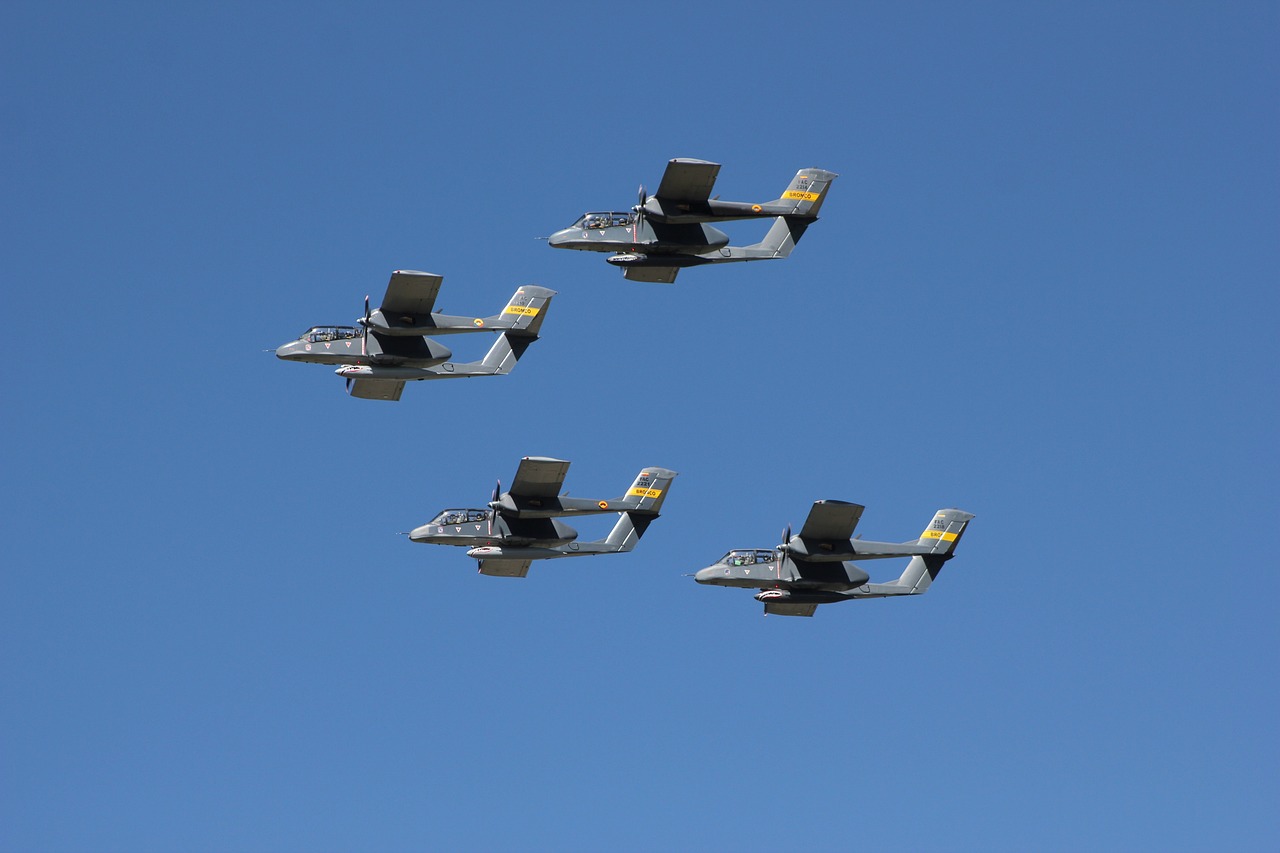
Accountability and Decision-Making
The main concern is accountability; determining who is responsible for the actions taken by AI systems in combat situations is crucial.
Establishing a clear chain of command, ensuring transparency in algorithms, maintaining human oversight, and developing ethical guidelines are essential steps.
International regulations help prevent misuse of AI technologies and promote ethical practices among nations, ensuring responsible deployment.
International Regulations and Standards
The primary goals include ensuring accountability, promoting ethical use, and preventing misuse of AI technologies in military operations.
Transparency helps build trust, ensures that decision-making processes are understandable, and allows for accountability in the use of AI systems.
Nations can collaborate through international organizations such as the United Nations, sharing best practices, and developing joint agreements that establish common standards.
Key ethical considerations include human oversight, the potential for civilian casualties, and the moral implications of autonomous decision-making in combat.Frequently Asked Questions


